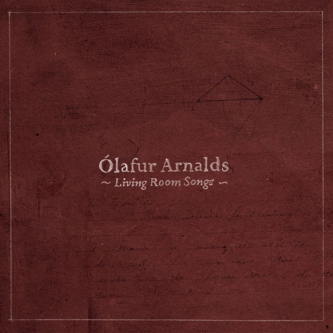Although Icelandic multi-instrumentalist and composer Ólafur Arnalds has admirably stepped out of his classical realm in the past (the surprising (and kind of awesome) heavy rock-out guitars of Eulogy For Evolution closing track “3704/3837,” the saddening computer voices and flickering chatter on Variations Of Static), it seems inevitable to associate him with his ornate and delicate piano and string compositions. Thus, his latest offering, Living Room Songs, delivers no great surprises as it plays to this expectation, almost down to a tee.
This seven song album (which feels more like an EP for its brevity) follows on from the idea behind his 2009 Found Songs EP in which Arnalds composed, recorded and released a track every day for a week. It was an admirable concept that was pulled off about as well as could be expected and took advantage of the way in which music can so quickly be recorded and given to the listener. Living Room Songs takes the concept of a song a day for each day of the week and, true to its title, moves the proceedings into Arnalds’ own living room.
The other difference this time is that each song was recorded live and a video of it was posted each day, along with a free download of the song. And, I suppose, that element makes just listening to the music feel like it’s missing a counterpart. Those curious will be happy to know the videos do help make the music’s recorded origins more transparent (for example, the microphone set-up on “Tomorrow’s Song” reveals why you hear so much creaking from the piano) but they also feel kind of pointless. Sure, it’s nice to see Arnalds play with a string quartet in his own living room, while also being able to just see his living room (I’d have thought he’d own more records), but, at the same time, did we really need to see it? The intimate appeal is obvious but it only seeks to add that bit of personalization to something he could have recorded in any small room. Plus, the word “living” seems to drop out of the picture since during the recordings everything looks tense and cold. On the video for the final track, “This Place Is a Shelter,” Arnalds gathers what appears to be all his friends and family to enjoy a performance but they all look so nervous and unhappy, like they’d rather just stand, socialize and drink instead of sitting there as quiet as possible while the cameras roll.
And the transparency isn’t a great thing either as it tends to reveal what appears to be a lack of grand aspiration. I concede intimacy might be a key player here but if I had fourteen string players in my front room I can’t help but think I’d get them to do more than peacefully play out a piano composition in ninety seconds like they do on “Lag fyrir Ömmu.”
Like this fourteen-person-strong moment, the best moments on Living Room Songs are equally fleeting. The skittering beats and icy keyboard on “Near Light” help flesh out the track but there’s nothing else like this on the album so it can feel like a bit of a sore thumb amidst everything else (albeit a rather beautiful sore thumb). The intimacy does play well for nuance in the music but again this is often only brief, like the way the first strings are played on opening track “Fyrsta” or the way the almost saddening string melody juxtaposes the piano chords that briefly swell on “This Place is A Shelter.”
Apart from the aptly titled “Film Credits,” which, worthily, plays much like a ode to Max Richter, the music on the remainder of the album is left to unsatisfying and grey piano suites that don’t sound destined for a more open setting nor benefit from the intimate setting of Arnalds’ own living room (the creaks on the aforementioned track “Tomorrow’s Song” are more memorable than the music itself). While it’s interesting to see the place where Arnalds may have come up and composed some of his better tracks, sometimes, it seems, it’s better not to take your work home with you.

